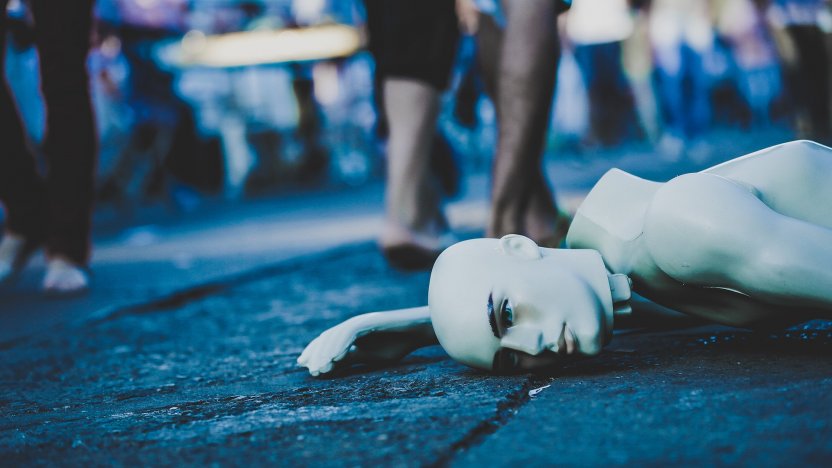Fast fashion and the challenges of IP enforcement

The copying of fashion and clothing designs is so endemic it appears almost accepted. But, a designer’s creative output is their intellectual property and should be protected as such. We set out tools for protection.
Few consumers can afford the haute couture paraded on international catwalks or worn by celebrities on red carpets. But, as grateful as many of these consumers may be when those designs eventually filter down to high-street stores, they generally only arrive there via the kind of copying and subtle knock-offs that would be considered unacceptable in many other creative industries. So, why is copying not just institutionalised, but also considered acceptable in the fashion sector?
Counterfeit chic
Many cite the fast-moving nature of the fashion retail sector as a reason for not dedicating resources or attention to the protection of fashion, clothing and accessory designs. In a fast-paced consumer sector such as fashion, popular styles sell out almost as quickly as they hit the shop floor and retailers need to ensure a rapid turnover of new, and often low-priced, stock if they are to keep their shoppers’ attention.
In this environment, the time taken to bring legal infringement actions can appear overly long and the cost too prohibitive; particularly as, in many cases, the design in question will no longer be in use by the time the action is ready to be pursued.
This has added to the sense of lethargy that has existed traditionally around stomping down on piracy in the sector. However, this is beginning to change. The growing availability of counterfeit goods, the advances in digital technology that have improved the ease and speed in which goods can be copied and produced, and the relocation of manufacturing sites to the Far East have all begun to focus fashion brands’ awareness on the importance of protecting and enforcing their IP rights.
Recurring plagiarism cases against high-street chains from everyone from haute couture fashion designers to recent fashion graduates, represent part of this shift change. The sector is increasingly recognising that unauthorised copying not just constitutes an infringement of their IP rights, but also has a major impact on their bottom line and reputation. The question is: what can they do about it?
Creating a protection strategy
The majority of infringement actions brought at present are done so on the basis of a designer’s copyright or unregistered design rights. But, while these rights are valuable, they are not always the most effective routes for action; particularly as they can be difficult to prove and, therefore, enforce. In comparison, a registered design right is a more certain and arguable right, giving its owner a clear legal redress in the case of infringement. Given that the cost of a design registration is relatively low, it’s worth protecting key innovations regularly, even if they have a limited lifespan.
Focus on your assets
It’s important to remember too that not all fashion designs will have such a short existence. After all, the little black dress, the mini skirt, the ‘skort’ (skirt-short) were all novel creations when they first hit the catwalk.
Similarly, many of the best-known fashion brands have built their reputations on iconic styles and motifs that have retained consumer interest as the brand has grown and evolved: Levi 501s, the Burberry check, Ray-Ban’s Aviator sunglasses, Doc Martin boots, Havaianas and the distinctive slouch of the Ugg boot to name but a few.
Styles such as these that are created as part of a company identity will obviously have a longer lifespan and should be protected and enforced proactively; although, it can often be difficult within the sector to identify a style that will endure beyond the current trends. Nonetheless, protection from unauthorised copying is becoming incredibly important as margins become ever tighter. Launching a new fashion design takes time, resources and creativity, so why would you let another company have a free ride on all that hard work?
A fashion checklist
The fashion industry is a fast moving industry with frequent changes and considerable opportunities for IP theft. Maximise the following IP protections to stop others from benefiting from your creativity and reputation:
- Protect your name and product names by registering them as trademarks;
- Protect the shape and pattern of your products with registered designs;
- Ensure that any designs that you commission are your property by organising assignments of any copyright and design rights to you;
- Put licensing and/or confidentiality agreements in place with any third parties (e.g. manufacturers of goods) to ensure you protect your IP and keep the benefit of that use for your company;
- Monitor for counterfeit goods, taking appropriate action when counterfeits are found (see: ‘Anti-counterfeiting: Is it time to review your approach?’); and
- Conduct searches to ensure that your own product lines do not infringe other third-party rights before they are launched to market.
Novagraaf’s professional advisory services are complemented by sophisticated IT packages to help you monitor and maintain your IP portfolio. To find out more, speak to your Novagraaf consultant or contact us below.